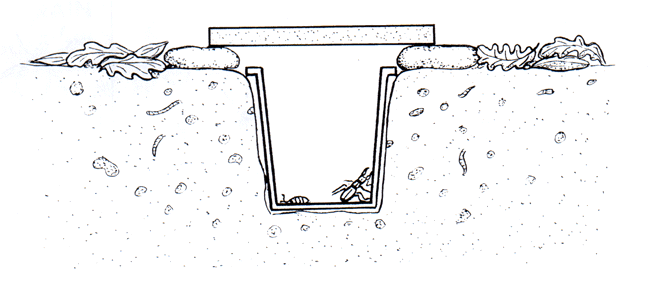Looking Closely at Minibeasts in Leaf Litter
Many invertebrates live hidden from view in the layer of leaf litter on the woodland floor or at the bottom of a hedge. One way to find some of these is to set a pitfall trap. To do this, dig a small hole in the ground and bury a plastic cup, or similar container, up to the rim. Protect the trap from rain by making a roof with a piece of raised wood or slate. A piece of meat or cheese may tempt some minibeasts into your trap. Leave the trap overnight and check the next morning for any animals that may have fallen in during the night. Empty the container into a light-coloured dish and have a close look at them, using a magnifying glass. Return the captives to their habitat when you have finished with them.

The pitfall trap will only catch those minibeasts that run about over the surface of the leaf litter. Many more live buried deep in the litter. To find these, collect some damp, rotting leaves from beneath the top dry surface and put them into a plastic bag. Take the bag home and empty the contents, a bit at a time, into an old sieve. Shake the smaller creatures into a shallow tray or onto a large sheet of white paper. Turn over the leaves in the tray and gently pick out any worms or other larger minibeasts. A paintbrush is useful for picking up tiny animals and transferring them into pots for examination with a hand lens. When you have finished, return all the minibeasts to the place you found them.
Read More: Identifying Minibeasts